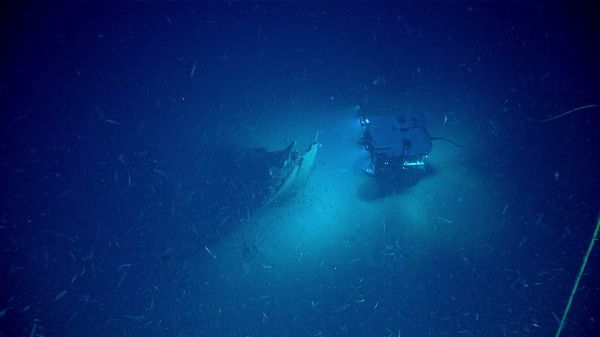On May 12, NOAA Ship Okeanos Explorer set sail for a 13-day shakedown and sea-trial expedition in the Gulf of Mexico. On May 16, while conducting an "engineering dive" to test new remotely operated vehicle (ROV) equipment, the team made an unexpected – and exciting – discovery: the wreck of what is likely a mid-19th century wooden sailing vessel.
Much of the May 16 dive was spent conducting tests of new ROV equipment and control interfaces...until ROV Deep Discoverer’s sonar picked up what appeared to be something in the shape of a shipwreck, and the team moved in to investigate.
The primary purpose of this shakedown expedition was to test, calibrate, and integrate equipment and train personnel in order to ensure the collection of high-quality data throughout the remainder of 2019. This differs from other missions on the Okeanos that are focused on exploring specific targets for scientific data collection and discovery. So the shipwreck finding required a swift change in operations, illustrating the power of telepresence technology. After a flurry of phone calls and emails to marine archaeologists around the country, experts tuned in to live video from the seafloor, lending their expertise as they virtually joined the dive. With a cadre of experts watching the dive, the ship’s Commanding Officer and the mission team agreed to extend the dive three hours longer than planned, enabling a more thorough characterization of the wreck.
Continue reading at NOAA.
Image via NOAA.


